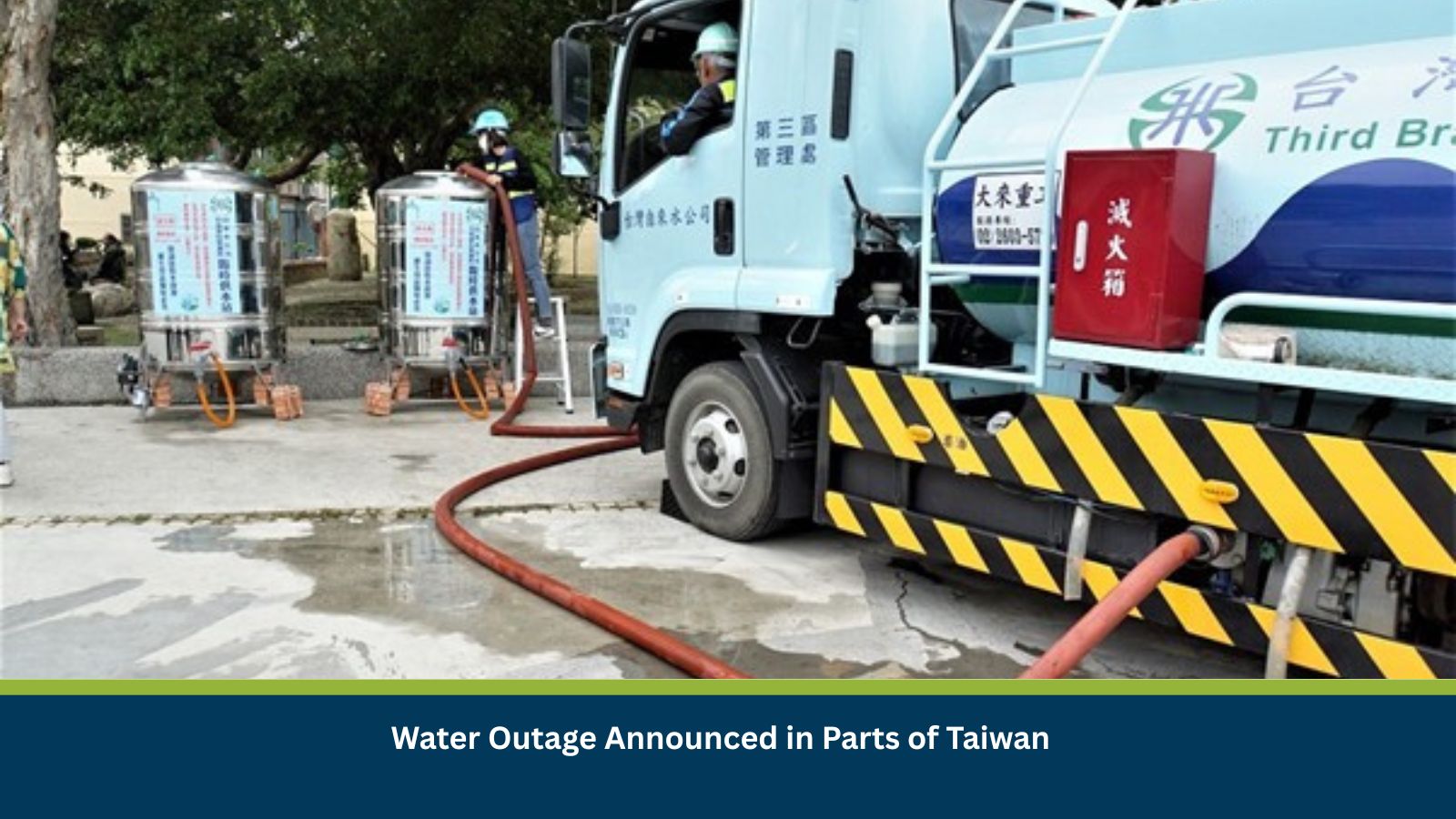What is Risk Analysis in the Context of Critical Infrastructure Events
A risk analysis of a critical infrastructure event like a water outage involves assessing the potential for widespread disruption to essential services and its cascading effects on a regional economy and daily life. In Taiwan, water outages are a recurring, often planned, event for maintenance or emergency repairs. This analysis focuses on forecasting the severity of the outage’s impact on business continuity, public health, and daily life, especially in the context of recent and ongoing severe weather events.
Executive Summary
- Date of Incident: 25 September 2025
- Location: Taichung City, Hsinchu County, New Taipei City, Taoyuan City, Taiwan
- Risk Category: Critical Infrastructure
- Severity Score: 3/5
- Confidence Level: 90%
A water outage has been announced for parts of Taiwan on Thursday, September 25. Based on historical analysis of similar incidents, the likely duration is projected to be between 18 to 48 hours. The severity is assessed as moderate (3/5), primarily impacting local business operations and daily life through service disruptions and hygiene challenges. This is justified by the recurring nature of these outages for scheduled maintenance or emergency repairs. Our confidence is high (90%), as utility companies in Taiwan typically provide timely announcements and have established protocols for managing such events.
Current Updates
As of Thursday, September 25, a water outage has been announced affecting unspecified ‘parts of Taiwan’. The announcement, as reported by local media, indicates a planned or immediate response to a utility issue, likely for pipeline maintenance or upgrades. While the exact duration and specific localities are pending further public dissemination from Taiwan Water Corporation, this type of event is common in the region. Separately, the Taipei Water Department has announced ongoing water supply suspensions in parts of Taipei City from September 22-28 for similar pipeline improvement projects.
Known Hotspots and Sensitive Areas
Historically impacted sensitive areas include major urban centers and densely populated districts. Major hospitals, such as Taoyuan General Hospital, are critical points of concern as they rely on continuous water for sanitation and patient care. Schools and universities often face temporary closures due to hygiene concerns. Elderly care facilities and food/beverage establishments across urban centers like Kaohsiung City, Hsinchu, and the affected areas in New Taipei and Taoyuan are also highly vulnerable to operational disruption.
Impact on Transportation and Services
The current outage is a direct consequence of or a pre-emptive measure for the integrity of the water infrastructure. While not causing direct transport disruptions, indirect impacts are expected.
- Transportation: Localized road closures may occur for utility repair work, as seen in past incidents in Banqiao and Zhongli districts. This could increase local traffic as residents seek alternative water sources.
- Business Operations: Water-intensive businesses like restaurants, hotels, and some manufacturing facilities will face moderate to significant disruption, potentially resulting in temporary closures or reduced capacity.
- Utilities: The outage highlights the vulnerability of the water distribution network. While this particular event is likely a controlled measure, it draws attention to the ongoing need for maintenance and upgrades to prevent future, larger-scale failures.
Recommended Actions
- Activate Business Continuity Plan: Facilities and operations teams should immediately deploy emergency water supplies, including bottled drinking water and non-potable water for sanitation. Verify on-site backup water tanks and conserve reserves for critical systems.
- Manage Employee Well-being: HR should communicate clear guidelines on water conservation, designate access points for drinking water, and ensure the availability of adequate hygiene facilities like hand sanitizer.
- Establish Communication Strategy: Provide regular, transparent updates to employees on the outage status. Proactively inform critical clients and partners about potential delays and mitigation measures.
- Assess and Protect Infrastructure: Conduct an immediate assessment of all water-dependent infrastructure, including cooling systems for data centers. Prepare for controlled shutdowns to prevent equipment damage upon water supply restoration.
Multidimensional Impact
The water outage is a complex risk that is compounded by other non-related events occurring in Taiwan. This is particularly critical in the wake of Typhoon Ragasa, which caused significant flooding, deaths, and displacement in Hualien. A prolonged water outage during post-typhoon recovery could severely hamper relief efforts and exacerbate public health risks due to a lack of sanitation. Additionally, if the outage coincides with Teacher’s Day or other upcoming holidays, it could lead to increased public frustration as residents navigating traffic control measures for holiday travel encounter congestion while seeking alternative water sources. The inability to maintain proper hygiene due to the outage also poses a risk for the spread of seasonal illnesses like flu and enterovirus, which are already on the rise.
Emergency Contacts
- Police: 110
- Fire Department/Ambulance: 119
- Taiwan Water Corporation: 1910
- Citizen Hotlines:
Final Thoughts
The water outage announced for parts of Taiwan, while a manageable event for now, serves as a crucial reminder of the island’s infrastructure vulnerabilities. It is not an isolated incident but part of a recurring pattern of scheduled maintenance and repairs, and it intersects with broader, long-term risks like the effects of climate change on water scarcity and the threat of typhoons. Proactive contingency planning and strong internal communication are essential for minimizing the disruption caused by these events and ensuring business continuity in a high-risk environment. Stay ahead of operational risks with real-time alerts, scenario modeling, and expert advisories with datasurfr’s Predict. Start your 14-day free trial of Datasurfr’s Risk Intelligence Platform today.






